Gearlab Outdoors Kalleq
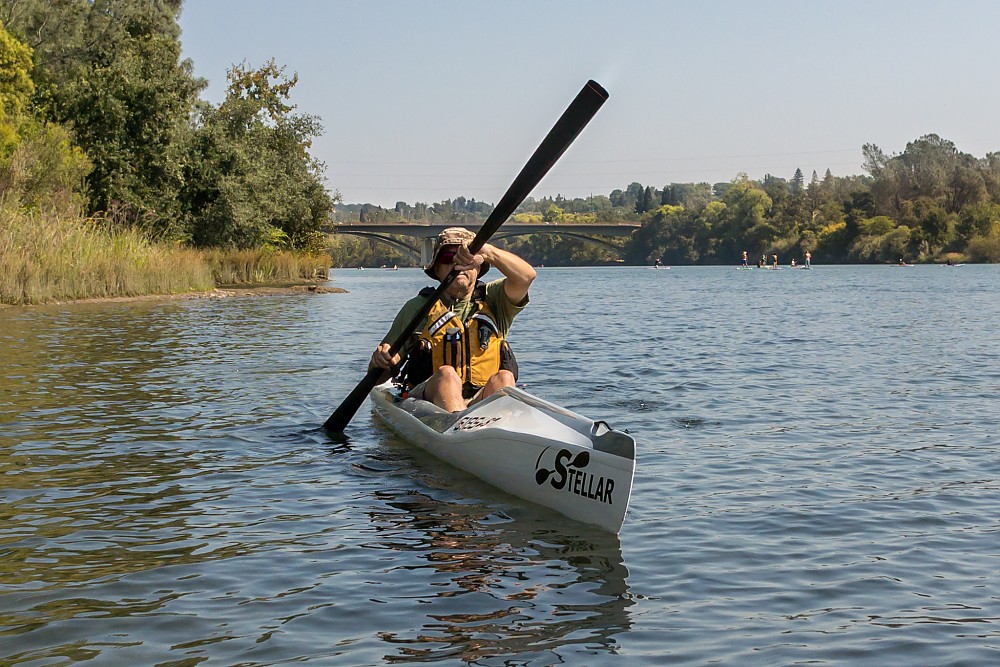
An ancient design with a modern flare, this Greenland-style paddle combines Inuit experience and traditions with modern materials and manufacturing.
Pros
- Silent
- Versatile
- Gorgeous
- Lightweight
Cons
- Expensive
- Learning curve
- Difficult to find a demo
What is a Greenland Style Paddle
So far as we know, what we call the Greenland style paddle today was originally developed and used by the Inuit, Aleut, and Yup'ik, peoples between 2000 and 5000 years ago. Among the many myths about these paddles is that the skinny blade, called a pautik by its creators, was a compromise due to living in an environment with little wood to be found. The reality is that demanding sea conditions and a need to cover large distances for food and survival, led them to the invention of the kayak and along with it the best propulsion system possible to thrust it; even under what could often be adverse conditions.
A Greenland style paddle looks as though it couldn't possibly pull much to the untrained eye. It does however have just about as much surface area as a European style blade; it's just spread out across the length of the loom (shaft) as opposed to all of it being just at the tip of the shaft. It actually offers plenty of power in a more compact package despite its ancient origins.

So Who is Gearlab Outdoors
Gearlab Outdoors is located in Taiwan. The website mentions that they are within an hour of rushing rivers, lush vegetation, craggy cliffs, and over 620 miles of incredible ocean shoreline. They state that their team of world class industrial engineers, designers, and artists strive to create some of the finest kayaking, cycling, rock climbing, mountaineering, and snowboarding gear available. They design, prototype, and field test all of the gear they manufacture. You can learn more about them here: https://gearlaboutdoors.com/pages/about-us
The Nitty Gritty
I'm sure many of you are interested in how this paddle compares to a "standard" paddle, and I will touch on that, but my review is based on the product for what it is. Not on how it compares to a completely different tool, albeit used for the same purpose. You can paint the walls of a house with a roller or a sprayer, but it wouldn't be fair to review one based on the performance and characteristics of the other.
So that said, I purchased mine online directly from Gearlab Outdoors because they offered the best price. I had questions concerning the proper length paddle I should get for myself and they responded to my emails within a day and were very helpful. I had no issues with our differences in language, they seem to speak English quite proficiently. I wish I could say the same for my own abilities with their language. So good marks for customer service.
The paddle did take a few days to ship, and they are up front about this on the website. They imply that they are quite picky about QA and check each order carefully before packaging and shipping. Once it shipped, I had it in about a week. Mine cleared customs within a day according to the shipping details, but understand that this is not always the case. I have had items sit in customs for a week or more. For this reason some people may prefer purchasing from a more local dealer instead.
I purchased the optional paddle bag with mine. The blades were individually wrapped in bubble wrap and placed inside the paddle bag. The bag was zipped up and placed inside a custom box that offers good protection for what's inside while at the same time remaining minimalistic. It was also well labeled as fragile, handle with care. I'm sure if I hadn't purchased the bag, there would have simply been more bubble wrap. Everything arrived in perfect condition.

Well, How Does it Rate
Upon inspection of the paddle I could find no flaws. The quality, craftsmanship, and materials used easily justify the price. A two-piece paddle, the ferrule joins the two halves together with zero play. There is no wobble or twist. The red square end visible in the photo below has a mating socket inside the loom of the other half of the paddle, which I'm sure is what eliminates any twisting.
Once assembled, it feels no different than a solid, one-piece paddle to me. The two halves snap together precisely and pull apart with just a little friction. I feel it's important to note here that you should pull them apart straight; do not twist or the two halves may bind. The fit is that tight. The ferrule spring, like the paddle, is carbon, so there is nothing to corrode or rust. The only metal parts found on the paddle are six tiny retaining screws, and those are made of aerospace grade titanium.
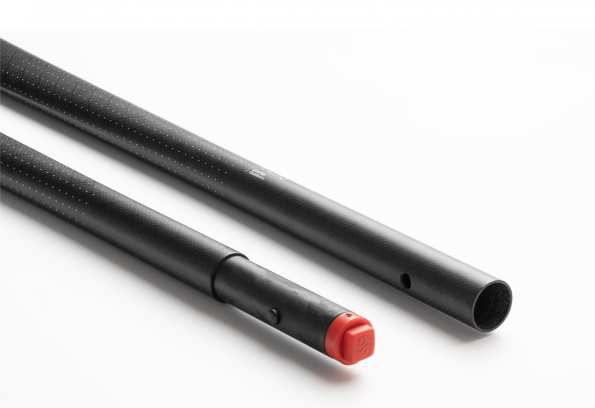
The weave of the carbon fiber used to construct the paddle is a beautiful diamond pattern which I have never seen before, and the layout is absolutely flawless. There is no excess glue or resin anywhere. Gearlab Outdoors says a finished regular length paddle weighs a mere 24.7 ounces, +/-1.1oz.
According to my postal scale the regular length paddle I received weighs in at 22.8 ounces. That's a little out of spec, but on the low end so no complaints from me. The finish is flat, not glossy, so the carbon fiber does not have as much of a 3D look until the paddle is wet and/or in the sun. I suspect the matte finish will help hide the evidence of use as time goes on and it does prevent it from reflecting glare into your eyes.

There is a small company logo in black on the end of each blade, and the company and model name is printed in white just above the grip area on one half. Neither is gaudy, in fact both are quite tastefully done in my opinion. There are also tiny white dots which mark the grip area of the paddle and add a bit of contrast to its otherwise dark appearance.
The blades come to a very thin edge on the sides and bottom. Everything is perfectly straight, smooth, and symmetrical. It has no left-right or up-down orientation. Because the blades are so thin and narrow, wind is a non-issue and feathering is not needed. It is as much art as it is science, and as much a part of history as it is a masterpiece of modern technology.

The tip and edges of the paddle are actually quite thin. I could see the tip getting chipped from hitting rocks and tree limbs, but the engineers at Gearlab Outdoors have that covered. The tips are made from a hard plastic and are sacrificial. Held in place by two of those aerospace grade titanium screws each, replacement tips are both inexpensive and easy to install. I purchased a spare set of six screws, two for the ferrule and four for the tips, along with an Allen wrench for $6. I also purchased a set of six tips for $25, and they come in colors. Both are fairly priced in my opinion, and two spare black tips were also included with the paddle, as was an Allen wrench and a couple of decals.
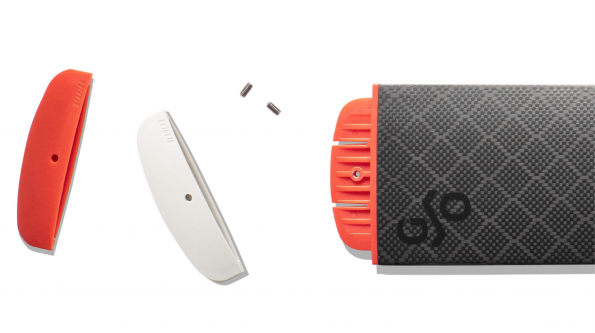
As for the product warranty, you get the standard one year free from defects with replacement or repair at Gearlab's discretion. What isn't standard is their three year promise to offer a one time 30% to 50% discount on the exact same paddle should you somehow manage to break yours in a crash; though they are specific that it has to happen on the water. All you have to do is register your new paddle within 60 days of purchase. I don't believe anyone offers anything like that at no additional cost. Even though such a thing doesn't happen often, I think it's a pretty nice touch.
I couldn't see purchasing such a nice paddle without the custom, protective bag. I purchased this item for an additional $58. That said, if you purchase any three items or more, you get 10% off the entire order. The extra screws and tips put me at three items and the 10% I saved covered the cost of the bag.
The bag appears to be well made. It's constructed of 600D Polyester Polyurethane DWR with an adjustable shoulder strap and a handle. I love being able to carry it over my shoulder like a Samurai Sword when I have to portage my kayak.

The bottom end is reinforced with a hard EVA shell inside to protect the tips of the blades and a quality YKK zipper is used. The bag is also equipped with two attachment buckles and straps to allow it to be attached to backpacks and other things, and I'm sure you could use them to attach other things to the paddle bag as well. The inside is well padded while still remaining compact and lightweight. It's divided into two compartments so that the two halves of the paddle cannot rub together when stored and the center divider is also padded. Finally there is a small zippered compartment on the outside to hold those replacement tips and screws.

It is universal for all three paddle lengths offered, and the top end simply folds over using an attached and adjustable strap should you have a medium or short length paddle. I went with the medium. While I initially thought the fold over design would present some trouble with the zipper, it does not. I see no reason for three separate bag lengths after having used it for a few trips now.
What is it For
The Greenland style paddle was originally designed for traversing great distances in adverse conditions for the purposes of hunting, fishing, and migrating. It was also used to aid in rolling a kayak back upright if flipped over. So it was a survival tool. As such, its design was honed and perfected out of necessity. It was designed by the Aleut, Inuit, and Yup'ik tribes for the long narrow boats they also invented; comparable to today's sea kayaks.
That being said, I have a Stellar S14S which is short and fat compared to those long and narrow boats. I feel the Kalleq suits that boat just as well as those, even if it does feel a bit more at home in my S18S, which is a surf-ski and more in tune with the traditional boat design of its original inventors. I use my S14S in rivers on moving water, and find the paddle works as good there as it does cruising on a lake in my S18S, and that includes going upstream in strong current. So while not a novice paddle by any means, it is quite versatile and should be at home in any kind of kayak.

Like any lightweight high performance paddle, the Kalleq will not hesitate to let you know you are not holding it correctly by fluttering in your hands as you pull it through the water. I had this experience with my first lightweight, high performance paddle and having since learned to use it, this one did not present any initial issues for me at all.
On the other hand my friend who normally uses a standard aluminum and plastic paddle tried it out and said it fluttered terribly and he couldn't understand how I can use it. So for a novice, there will be a learning curve, and as a novice you will probably dislike it compared to a more basic paddle until the proper technique is learned... the same as with any lightweight, high performance paddle.

So How Does it Compare
How good it works and how it compares to a European paddle is very subjective. I can only offer my opinion.
I'll begin with a little about myself. I've been paddling kayaks for about 15 years. In that time I've paddled roto-molded, blow-molded, thermo-molded, composite, sit-in, sit on top, surf-ski... just about everything except full out white water kayaks. I've stuck to rafts for that. I have spent the least amount of time using sit in kayaks, preferring sit on tops and surf-skis. Touring is my thing, and it's not unusual for me to travel 20 miles or more in a day.
In that time, I've learned to use various paddles. Low angle, high angle, wing, etc. I started out with a cheap aluminum paddle like most people do. It took me a good month to learn how to use, and fall in love, with my first carbon fiber paddle... a Werner Cyprus. I still have it and still love it. A couple of years ago I purchased an 18' surf-ski, and subsequently spent about a year figuring out the wing paddle. Odd cow, that one... at least for me.
So with all of that said, I found the transition to a Greenland style paddle to be fairly easy. If however you've only used a basic European style paddle, you should expect a learning curve, possibly steep. Again, this is not a novice paddle. During your transition it will flutter in your hands as you paddle. Practice will develop muscle memory and eventually that will fade away. Only then will you begin to realize the performance gains of this, or any other high performance paddle. Until that time, you will probably dislike it.
Because a standard paddle puts all of its surface area at the the very end of the shaft, the paddle initially tries to pivot when you first begin pulling a stroke. Mind you it's not something I ever really noticed, or at least thought about, until I tried a Greenland paddle. To me, the Greenland paddle pulls through the water much more smoothly, without as much of that initial catch or jerk that I associate with the paddle trying to pivot. I suspect this is because the blade's surface area extends all the way up to where you hold the paddle instead of it all being concentrated all at the tip of the shaft. To me, it seems easier on my shoulders and wrists. Also worth mentioning is that the shaft, called the loom on a Greenland paddle, is a bit fatter than a standard paddle. So this might be an issue for some people and is worth consideration.
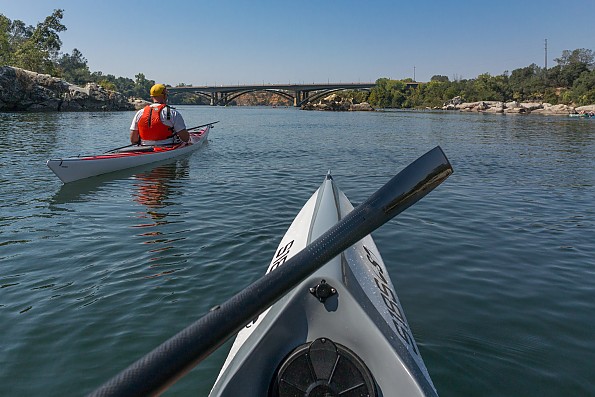
One of the first things that really struck me about the Kalleq is its ability to move through the water in complete silence. The way in which the blade enters and exits the water makes this stealth mode very easy to accomplish. I can see where this would be of great advantage when hunting then and now, and for modern day wildlife photographers as well. It's also fun sneaking up behind your friends and flying past them.
For those familiar with wing paddles, you probably know they offer about a 3% advantage by creating lift in the water in much the same way an airplane wing creates lift in the air. Thus the name. While 3% may not seem like much, it's actually over 18 feet in a 200 meter sprint.
Well, a Greenland paddle offers the same kind of advantage, albeit more like a propeller blade than a wing, and not quite as much. If you use it with the same kind of forward stroke as a wing, it will respond in much the same way. This is done by holding the paddle out and pulling it away from the boat as you pull it back, kind of following the V in the water created by the front of your boat as it slices through. You don't start quite as far up with the Greenland, and you exit a little further back, but it is similar.
Unlike a wing paddle, a Greenland paddle works well with more than just that one forward stroke. You can use it at a low angle, high angle, canted, for sculling, sweep strokes, as a rudder... it is a very versatile paddle.
You should however understand that this is a core paddle. It really needs rotation to work efficiently. It does not care much for being plowed through the water using just your arms. In this regard, a standard Euro paddle is much more forgiving. The Greenland style paddle requires good core rotation and pushing with your feet to really shine. If this is something you have yet to learn how to do, you are going to have to submit to a learning curve. If you already know how to do this, you will likely find it much easier to transition.
Finally, if you have a sea kayak, Greenland style paddles are considered second to none for assisting a roll. Most who have used both paddle types agree that a Greenland paddle is superior for this, especially in turbulent water, since the blade is much less affected by the turbulence.
Summing it Up
So in my opinion the product is five stars so far as what it is. From craftsmanship, to materials used, to packaging, it is outstanding.
Customer service is good as is the warranty. In the water, the paddle performs as beautifully as it looks. It seems to be easier on the shoulders and wrists to me. It pulls through the water buttery smooth and in complete silence. In my opinion it moves my boat through the water with what feels like less effort, though gentler on the body is probably more accurate.
It does require some skill and technique to work efficiently. While you can plow through the water with anything, you will not reap the benefit and rewards of the design if you use it that way.
With proper skill and technique I see no reason why it could not be used with any kayak, though it may feel a bit more natural in longer, skinnier boats.
Finally, if you find that paddle assisted kayak rolling is a fun thing to do, my understanding is that these are like laughing gas. Also, a shout out to my friends Omar and Brian, as well as one kind stranger, for putting up with and taking the photos of me.
Fun fact: Ever wanted to spell kayak in proper Inuktitut? It's ᖃᔭᖅ, which is pronounced "qaˈjaq". Now you know.
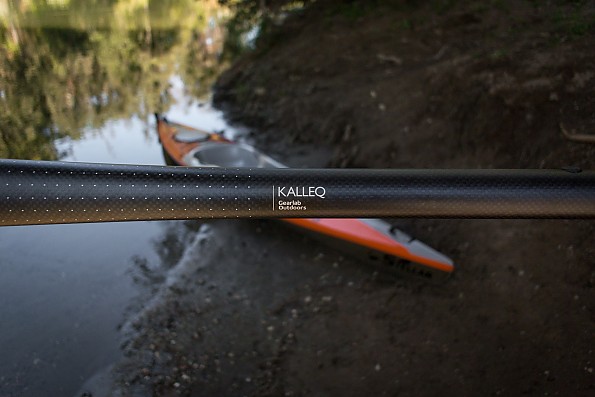
Background
I'm just a regular guy who loves kayaking. I've been at it for quite a while now, and intend on continuing this journey until my body rejects the idea with full vengeance. While I have used all kinds of paddles over the years, this one is currently my favorite for almost everything.
Source: bought it new
Price Paid: $468



